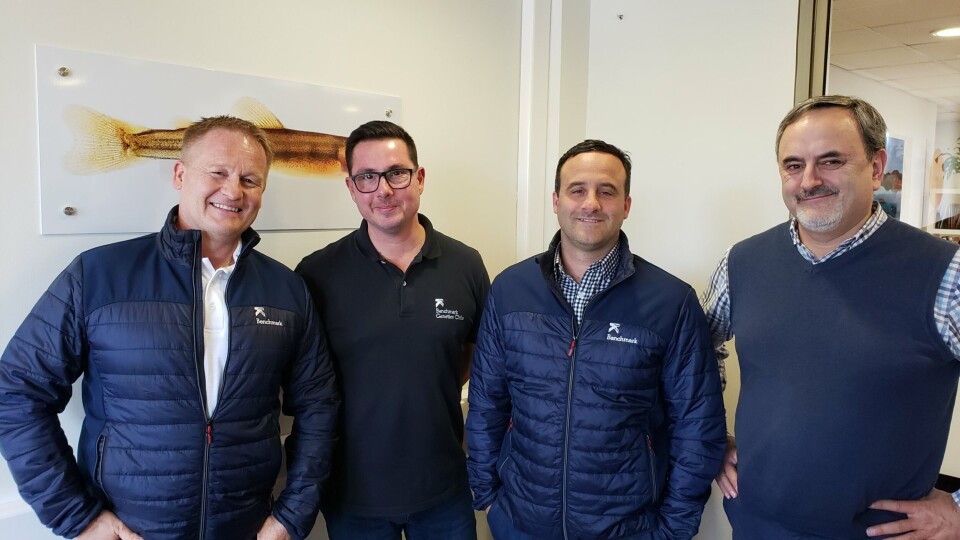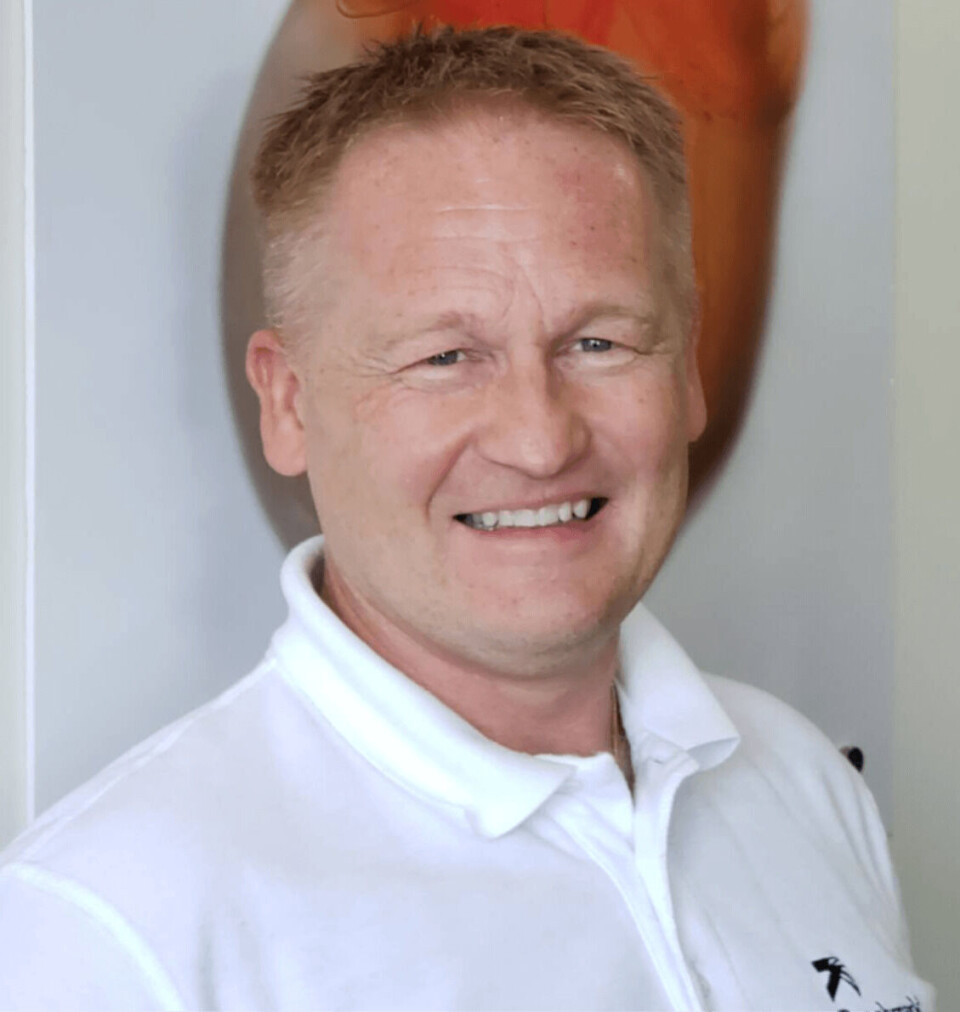
Benchmark woos Chile with promise of better salmon
The Chilean branch of salmon ova supplier Benchmark Genetics has outlined its plans to become a major player in the country.
These include supplying ova selected for rapid growth and increased resistance to bacterial kidney disease (BKD), Salmonid Rickettsial Septicaemia (SRS) and sea lice.
Benchmark Genetics Chile is part of UK-based Benchmark Holdings’ genetics division, which includes SalmoBreed (Norway), StofnFiskur (Iceland) and Akvaforsk Genetics.
According to executives, the firm intends to transfer all of its experience and genetic technology to Chile, and will adapt its methods to local productive reality and customer needs.

High biosecurity
“We are working with a global team to offer high biosecurity, genetic tools, productive knowledge and ova of the highest quality,” Geir Olav Melingen, commercial director of Benchmark Genetics, told Fish Farming Expert’s Chilean sister site, Salmonexpert.
Melingen said Benchmark had identified some problems which it has been working on since 2017 in Chile, and will have concrete solutions by 2021 when the company starts selling ova produced in Chile.
“We identify SRS, BKD and Caligus as the big problems and we are very excited, we have a great expectation in the product that we can supply in 2021,” said the executive.
Cryopreserved semen
“We have also put an important focus on optimising our selection processes to achieve high growth rates, incorporating semen cryopreservation technology that allows us to use elite males in all our commercial productions.”
Benchmark Genetics Chile has been able to select ova from Benchmark’s genetic nucleus in Iceland, a process that began with the importation of eggs in 2017 and has been maintained during this year.
The more than 200 families that make up the nucleus are in its biosecure reproductive centre in Ensenada.
In addition, Benchmark is in the process of investment and conditioning of its new broodstock facility in Curacalco, which will be used for fattening and photoperiod management under strict sanitary, environmental and animal welfare controls.
Performance traits
Jean Paul Lhorente, technical director of genetics and R&D in Chile, said that “the great opportunity today is that these same families are in Chile, Iceland and Norway, which will allow us to access a large data platform of traits of performance and resistance to diseases relevant to Chile”.
At the same time, Benchmark is making challenges to select fish against different diseases and sending groups of sentinel fish to different producers to test and validate genetic characteristics in sea conditions in Chile.
Continuous production
“Additionally, we have already invested in two units to incorporate photoperiod and a cryopreservation laboratory with our own technology that will allow us to maximise the use of our best males and ensure continuous production even out of season,” said Matías del Campo, general manager of Benchmark Genetics Chile.
With this strategy, the company expects to produce more than 50 million eggs from the beginning of 2021.
Benchmark, which owns 100% of the ova market in Iceland, more than 80% in the Faroe Islands, more than 50% in Scotland and more than 40% in Norway, seeks to position itself in Chile not only selling genetics, but also providing genetics services to salmon farmers who have their own and integrated breeding programs.
“The big winner with us entering the market is Chilean salmon farming, because when you bring another large player like us, that only makes the competition stronger and directs and drives innovation. We have seen it in Norway and in Europe in general. Our arrival will benefit the development of higher quality genetic products,” said Melingen.
Along the same lines, Del Campo added that “we believe that there will be a process in which we will demonstrate that we are competitive and that we are doing things well with local investments; we are not trying to impose technologies or products that are not adapted to Chilean reality”.
“We also provide genetics services and value the genetic diversity that companies that have their own programs today. We are flexible in the way we offer genetics, we don’t want to impose our genetics as the only solution,” said the general manager.
Improved disease resistance
As for the products that will be available for the Chilean market, the company will have SalmoProtect as the base product and SalmoSelect that offers a series of attributes, such as genetic selection for improved resistance to specific diseases.
“We are producing phenotypes that the Chilean industry needs, this means eggs that are more resistant to BKD, SRS, Caligus and PRV, balanced with a fast-growing selection,” said Lhorente.
To date, the company has made progress in BKD, where the challenges made in experimental trials will allow it to produce eggs with potential for resistance and mortality reduction.
50% difference in mortality
“Our results showed that between the most susceptible and the most resistant fish you can obtain a 50% difference in mortality and with a 20% heritability, which allows us to project that improvement,” explained Lhorente.
“In addition, we identify a positive correlation between BKD and SRS, that is, it will allow us to generate eggs that are resistant to both diseases more efficiently.”
He added that Benchmark is also incorporating other tools that allow better results in less time.
“In addition to implementing a thorough selection of surviving fish, we are incorporating genomic data to improve the identification of genetically superior individuals, and generating new phenotypes such as biomarkers and histology, as tools to analyse possible differences. With this, in one generation we can achieve what was once done in many generations. We are accelerating genetic selection in the right direction,” he concluded.























































